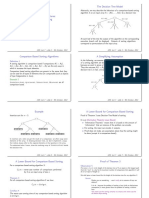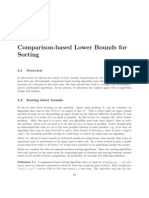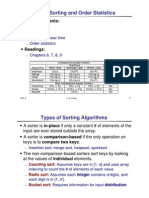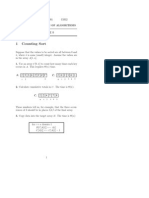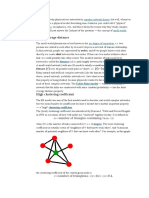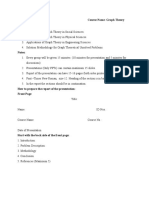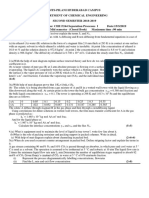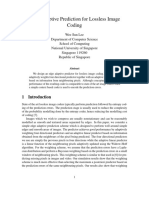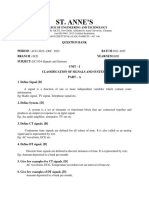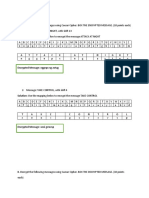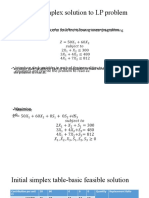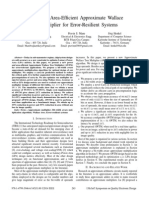0% found this document useful (0 votes)
106 views17 pagesData Structures and Algorithms - L6
This document discusses lower bounds on sorting algorithms. It states that the best worst-case sorting algorithm so far has a time complexity of O(N log N). It then proves a lower bound of Ω(N log N) for comparison-based sorting, showing that no algorithm can sort faster than this using only comparisons. It introduces decision trees to model sorting algorithms and proves that any sorting algorithm requires a decision tree of height Ω(N log N) due to the number of possible permutations. This establishes that comparison-based sorting requires Ω(N log N) time.
Uploaded by
vidulaCopyright
© © All Rights Reserved
We take content rights seriously. If you suspect this is your content, claim it here.
Available Formats
Download as PPT, PDF, TXT or read online on Scribd
0% found this document useful (0 votes)
106 views17 pagesData Structures and Algorithms - L6
This document discusses lower bounds on sorting algorithms. It states that the best worst-case sorting algorithm so far has a time complexity of O(N log N). It then proves a lower bound of Ω(N log N) for comparison-based sorting, showing that no algorithm can sort faster than this using only comparisons. It introduces decision trees to model sorting algorithms and proves that any sorting algorithm requires a decision tree of height Ω(N log N) due to the number of possible permutations. This establishes that comparison-based sorting requires Ω(N log N) time.
Uploaded by
vidulaCopyright
© © All Rights Reserved
We take content rights seriously. If you suspect this is your content, claim it here.
Available Formats
Download as PPT, PDF, TXT or read online on Scribd
/ 17




